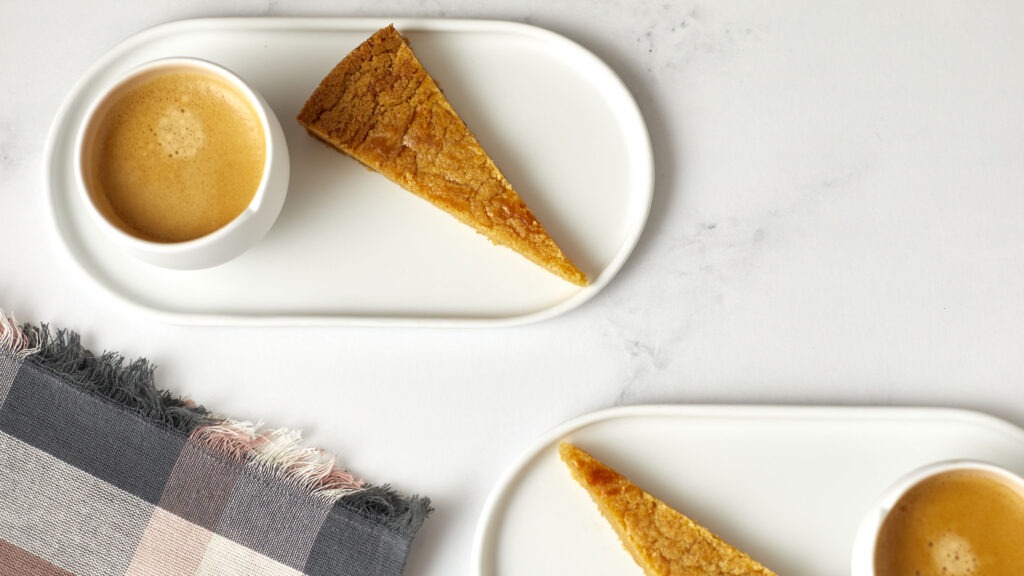It’s hard to explain what “boterkoek” is… it’s neither a cookie nor a cake. Literally, it translates to “butter cookie,” or “butter cake.” but I believe it’s unique. The closest resemblance is probably a bar cookie.
This is a fantastically rich, moist, dense, and buttery baked good. It pairs great with a cup of coffee. Growing up, whenever we would have company coming over, my mom would bake these, and offer people “iets lekkers bij de koffie?” (Literal translation: “would you like something tasty with your coffee?”) The recipe came from our old neighbor, and it is absolutely delicious!
Boterkoek: Dutch Butter Cake
Ingredients
Equipment
Method
- Preheat your oven to 175C ( 350F) non-convection.If you want to use convection, lower the temperature to 160C (325F).
- Grab two small bowls, and separate one of the eggs: put the yolk in one bowl, and the whites in the other.Crack the second egg in the bowl with the yolk.
- Rub the cake pans with butter; make sure it's fully covered. Then dust them with flour.
- Melt the butter on the stove over low heat.
- In a large bowl, sift together flour, caster sugar, sugar, a pinch of salt.
- Add melted butter, and by hand, mix it all together until the dough and sugar are fully hydrated and combined.
- Add one egg yolk (and some of the white) to the dough, and mix it through by hand. When the first yolk is fully combined, add the rest of the white and the second yolk. Mix it through by hand until fully combined.
- Split the dough in two, and put them in the cake pans. Push it in so it's evenly distributed.
- Beat the egg white until it's smooth, and brush it on the two boterkoeken.
- Put the pans in the oven for 15 Minutes.
- Open the oven, and with the back of your spoon, push the dough down. One of the characteristics of boterkoek is that it's very dense, and by pushing it down, you are achieving a dense texture.
- Put the pans back in the oven for 10 Minutes.
- Open the oven, and with the back of your spoon, push the dough down again.
- Put the pans back in the oven for 5 Minutes
- Open the oven, and with the back of your spoon, push the dough down again.Check the color, and if it's a nice golden brown, you can take them out. Otherwise, leave them in a bit longer.
- When they're golden brown, take them out of the oven, and let them cool down fully.
- This is typically served with some coffee. Slice a small wedge or square, and serve it with a nice, hot, cup of coffee!



I‘ve had Dutch Boterkoek. Love it! I’m wondering about a couple things:
1) Why do you use self-rising flour if you want it to stay dense, so you have to keep pushing it down as it cooks?
2) Why do you use two different kinds of sugars? What does that do for the dough?
3). How do I know when there is too much fat in butter and so I should cut back the amount?
1 / 2) That’s what my mom, and grandma used… I have learned to not question them 🙂
3) I know it by feel when kneading the dough, if the fat doesn’t incorporate into the dough.